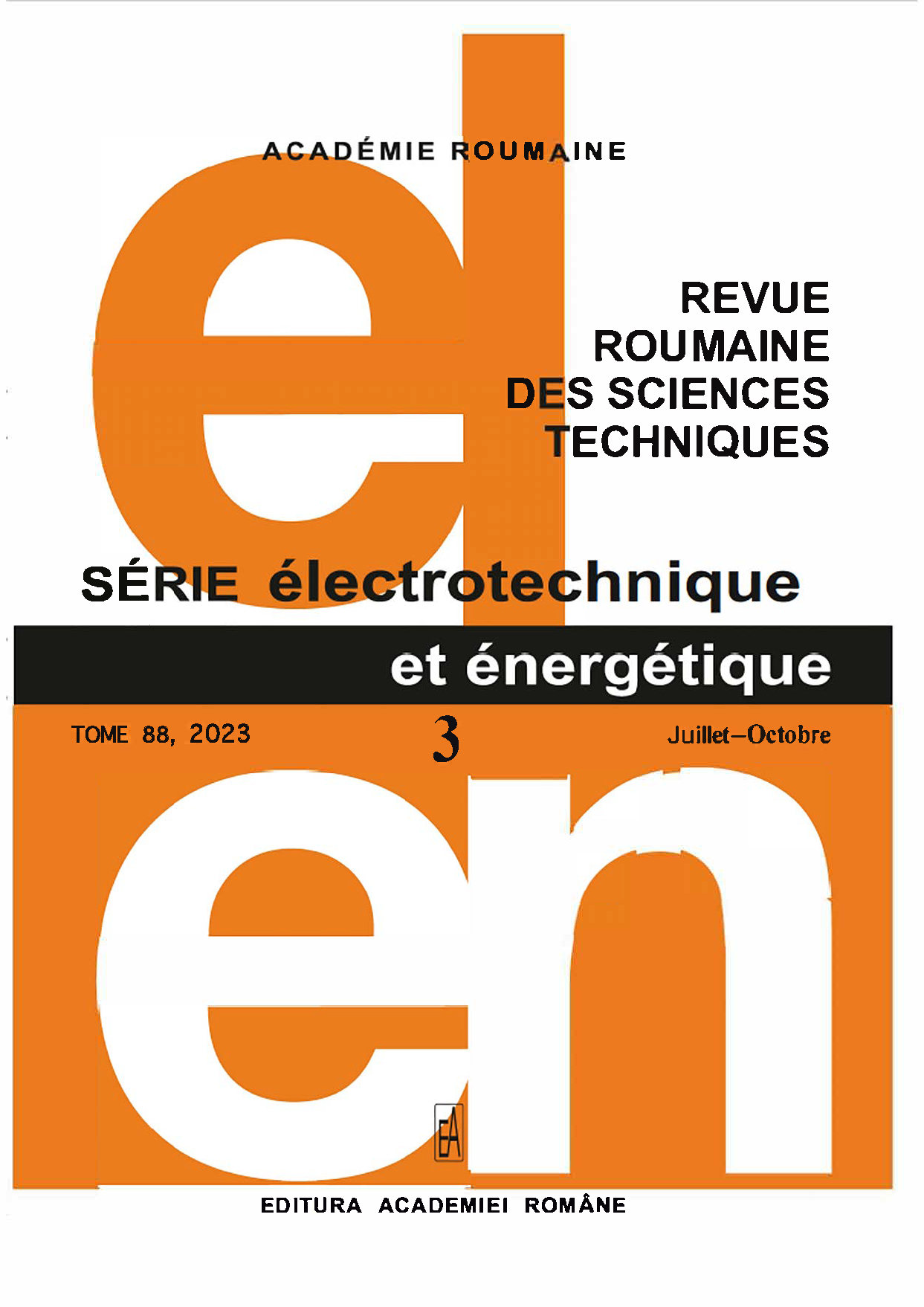DEVELOPMENT OF BACKPROPAGATION ALGORITHM FOR ESTIMATING SOLAR RADIATION: A CASE STUDY IN TURKEY
DOI:
https://doi.org/10.59277/RRST-EE.2023.3.11Keywords:
Solar radiation, Estimation, Artificial neural network, BackpropagationAbstract
Solar energy has an important role in achieving the objective of replacing fossil fuels and reducing greenhouse gas emissions with significant potential. Engineers, architects, and farmers require accurate information about solar radiation in order to develop solar energy systems. It is a common practice for meteorological services around the world to measure the duration of sunshine and air temperature. Despite this, worldwide measurements of solar radiation are extremely rare and some information is lacking. It becomes vitally critical to estimate solar radiation at sites that have not own station. In the literature, a variety of models have been developed to estimate solar radiation. The artificial neural network (ANN) model is commonly used for the estimation of global solar radiation. In this study, a backpropagation algorithm for throughout the year is generated to estimate global solar radiation in Adana by using the meteorological data obtained from Turkish State Meteorological Services. ANN model was developed by using the data for 2014, 2015, and 2016 years with the MATLAB program. The data for 2017 is used for testing the model. A comparison between the developed model and real data is performed depending on the R2 value. As a result of the study, the R2 obtained by training the data was calculated as 0.9019. The R2 value derived from test data was calculated as 0.7277. In light of these results, it can be said that the estimation study was satisfactory.
References
(1) N. Rathore, N.L. Panwar, F. Yettou, A. Gama, Estimation and mapping of linke turbidity factor from solar radiation measurement for Indian climatic conditions, Rev. Roum. Sci. Techn.-Electrotechn et. Energ., 66, 4, pp. 285-292 (2021).
(2) M. Sahan, O. Tokat, O. Yuksel, Daily total solar radiation measurements in Osmaniye, Süleyman Demirel University Faculty of Science and Letters Journal of Science,10, 2, pp. 97-105 (2015).
(3) E.E. Ituen, N.U. Esen, S. C. Nwokolo, E.G. Udo, Prediction of global solar radiation using relative humidity, maximum temperature and sunshine hours in Uyo, in the Niger Delta Region, Nigeria, Advances in Applied Science Research, 3, 4, pp. 1923-1937 (2012).
(4) G.N. Tiwari, Solar Energy: Fundamentals, Design, Modelling and Applications, Alpha Science Int'l Ltd (2002).
(5) R. Srivastava, A.N. Tiwari, V.K. Giri, Forecasting of solar radiation in India using various ANN models, 2018 5th IEEE Uttar Pradesh Section International Conference on Electrical, Electronics and Computer Engineering (UPCON), pp. 1-6 (2018).
(6) B. Sibaneasan, B.C. Yu, K.P. Goh, Solar forecasting using ANN with fuzzy logic pre-processing, Energy Procedia, 143, pp. 727-732 (2017).
(7) M.A.F.B. Lima, P.C. Carvalho, A.P.D.S. Braga, L.M.F. Ramirez, L.R. Leite, MLP back propagation artificial neural network for solar resource forecasting in equatorial areas, Renewable Energy and Power Quality Journal (RE&PQJ), 1, pp. 175-180 (2018).
(8) M.J. Ahuja, M. Sharma, V. Birchha, Solar Energy Prediction using LM-Back-propagation in ANN, IOSR Journal of Computer Engineering (IOSR-JCE), 21, 1, pp. 1-7 (2019).
(9) E.Z. Mohamed, Using the artificial neural networks for prediction and validating solar radiation, Journal of the Egyptian Mathematical Society, 27, 1, pp. 1-13 (2019).
(10) J. Li, J. Chen, J. Shi, F. Huang, Brief introduction of back propagation (BP) neural network algorithm and its improvement, Advances in Computer Science and Information Engineering, Springer, pp. 553-558 (2012).
(11) O.I. Abiodun, A. Jantan, A.E. Omolara, K.V. Dada, N.A. Mohamed, H. Arshad, State-of-the-art in artificial neural network applications: A survey, Heliyon, 4, 11, pp. 1-41 (2018).
(12) S. Walczak, Artificial Neural Networks, Encyclopedia of Information Science and Technology, Fourth Edition, IGI Global, pp. 120-131 (2018).
(13) M. Kubat, Artificial Neural Networks, An Introduction to Machine Learning, Springer, pp. 117-143 (2021).
(14) R. Tuntas, B. Dikici, An investigation on the aging responses and corrosion behaviour of A356/SiC composites by neural network: the effect of cold working ratio, Journal of Composite Materials, 50, 17, pp. 2323-2335 (2016).
(15) S. Setti, A. Wanto, Analysis of backpropagation algorithm in predicting the most number of internet users in the world, Journal Online Informatika, 3, 2, pp. 110-115 (2019).
(16) A. Wanto, M. Zarlis, D. Hartama, Analysis of artificial neural network backpropagation using conjugate gradient fletcher reeves in the predicting process, Journal of Physics: Conference Series, 930, 1, pp. 12-18 (2017).
(17) A. Hasni, A. Sehli, B. Draoui, A. Bassou, B. Amieur, Estimating global solar radiation using artificial neural network and climate data in the south-western region of Algeria, Energy Procedia, 18, pp. 531-537 (2012).
Downloads
Published
Issue
Section
License
Copyright (c) 2023 REVUE ROUMAINE DES SCIENCES TECHNIQUES — SÉRIE ÉLECTROTECHNIQUE ET ÉNERGÉTIQUE

This work is licensed under a Creative Commons Attribution-NonCommercial-NoDerivatives 4.0 International License.


